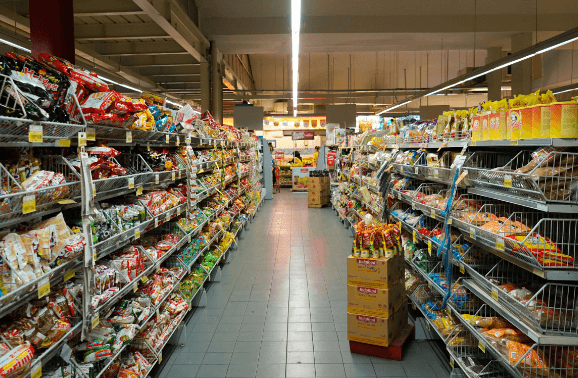Contrasting Modern Warehouses with Traditional Retail Stores

The retail landscape has undergone an enormous transformation [1] ation in recent years, with the emergence of modern warehouse-style structures challenging the conventional brick-and-mortar stores that have long dominated the industry. This article will delve into the key differences between a modern warehouse building and a traditional retail store. These distinctions encompass various aspects, from design and function to customer experience and logistics. Understanding these differences is essential as retailers adapt to evolving consumer preferences and market dynamics.
Design and Layout
One of the most apparent distinctions between modern warehouses and traditional retail stores is their design and layout. Storefronts with attractive window displays, aisles, and well-organized product shelving often characterize traditional stores. In contrast, modern warehouses prioritize efficient storage and distribution, featuring high ceilings, open floor plans, and industrial-grade racks. Here, the focus is maximizing storage space rather than creating an inviting shopping atmosphere.
Customer Experience
Traditional retail stores excel in creating a tailored and immersive shopping experience. Shoppers can touch, feel, and try products before making a purchase. These stores prioritize aesthetics, lighting, and visual merchandising to enhance the customer journey. On the other hand, modern warehouses emphasize convenience and efficiency. While they may lack the ambiance of traditional stores, they provide speed and accessibility, catering to consumers who value convenience and a wide product selection.
Inventory Management
Inventory management practices differ significantly between the two. Traditional retail stores maintain limited stock on-site, restocking as needed. In contrast, modern warehouses stock many products and rely heavily on just-in-time inventory systems. This enables them to meet high demand quickly, reducing the risk of stockouts and providing customers with an extensive product selection.
Logistics and Fulfilment
Modern warehouses are integral to the e-commerce boom. They serve as hubs for order fulfilment and shipping, utilizing advanced technologies like automated conveyor systems and robotics. In contrast, traditional stores focus on in-person sales and may offer limited online shopping options. The logistics priorities of each are distinct, with warehouses emphasizing speedy and accurate order processing.
Read also Some Twitchadegbuyievery
Cost Structure
The cost structure of modern warehouses and traditional retail stores varies significantly. Conventional retail stores incur rent, utilities, and store upkeep expenses. In contrast, modern warehouses may require substantial initial investments in logistics technology but can save on storefront expenses. Their cost-efficiency stems from economies of scale in storage and distribution.
Adaptability to Market Trends
Adaptability to changing market trends is crucial in the retail industry. Traditional retail stores may struggle to keep up with rapidly evolving consumer preferences and the rise of e-commerce. Modern warehouses, built with scalability in mind, can pivot quickly to accommodate shifting market dynamics. They can expand their product offerings or integrate new technologies to meet changing demands.
Conclusion
As the retail landscape evolves, the differences between a modern warehouse building and a traditional retail store become increasingly apparent. While conventional stores excel in providing immersive shopping experiences and personalized interactions, modern warehouses shine in terms of efficiency, logistics, and adaptability to market trends.
The choice between these two formats ultimately depends on a retailer’s target audience, business model, and market positioning. Some retailers may find success by blending elements of both, creating an omnichannel shopping experience that caters to diverse consumer preferences. Regardless of the approach, understanding the unique strengths and weaknesses of modern warehouses and traditional retail stores is essential for staying competitive in today’s ever-changing retail industry.







